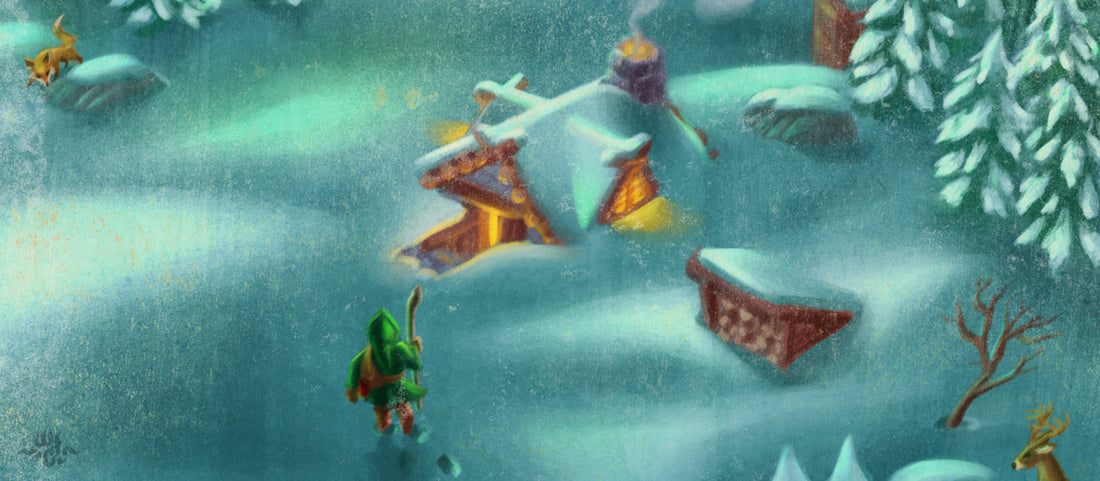
Reading stories by the fire
Growing up, the houses we lived in always had a fireplace where you could hear the wood cracking. It would warm the entire living room for hours, from sundown until bedtime. Years later, I lived in an apartment but one of my best friends had a place in the mountains where we’d go on the weekends. There as well, the hearth was where we would gather. It was more than just a way of keeping yourself warm. It was part of everyday life.
Walking into a cold chalet covered in snow, the first thing we would do after dropping our bags and turning the light on was to start a fire. Minutes later, we would gather around with a drink, telling stories and having a laugh, while roasting chestnuts. It was quite special, really. Being able to enjoy these simple things has always been for me the key to unlocking many happy moments.
Comfort

Nowadays, I live quite far from the Alps of my formative years. The fires we enjoy are outside, in a pit and instead of chestnuts, we roast marshmallows. The winters are just as snow laden but there is no fireplace to sit by once you’ve made your way back inside. We do have a propane fireplace in the basement. Even though it does not compare, it does help keep us warm in the winter, especially when the power goes out because of a storm. But embracing change is for me a healthy way of moving forward, and it definitely doesn’t mean you can’t reminisce, quite the contrary.
My journey back into the world of tabletop role-playing games was partly instigated by nostalgia but this yearning isn’t what drives my enjoyment of the game. The very concept of this type of storytelling and its ability to create unparalleled immersion is what fascinates me. I discovered these marvels of shared storytelling with a wide variety of games that I have talked about on several occasions, in particular The Dark Eye, Call of Cthulhu, Paranoia, Dungeons & Dragons, Stormbringer, MERP and many more. But playing these games with my original group only happened after some of us had experienced what was for many then a common gateway to the world of tabletop role-playing: gamebooks.
The concept of the single player adventure gamebook is simple. It is a work of fiction that allows the reader to participate in the story by making choices. The narrative does not follow a traditional book structure. Instead of chapters, the story is broken up into numbered paragraphs. At the end of each, a choice is usually presented to the reader and according to which one they choose, they are directed to the next part of the story and so on. As you unravel your chosen path, the story develops toward its successful completion, or the main character’s untimely death. In the US, I understand that the “Choose Your Own Adventure” books by Bantam Books were very popular. On the old continent, where I grew up, it was another series altogether that conquered young readers.
Fighting Fantasy
Back in Europe, Steve Jackson and Ian Livingstone’s The Warlock of Firetop Mountain took the fantasy world by storm and everyone who had the slightest interest in fantasy literature wanted to get a taste of it. For many of us, Tolkien had opened a door and anything that could remotely scratch that fantasy itch was worth a try. What followed was the onslaught of a new genre of books. As 6th graders, we found ourselves reading during lunch breaks, which, looking back, must have had our teachers in a daze!
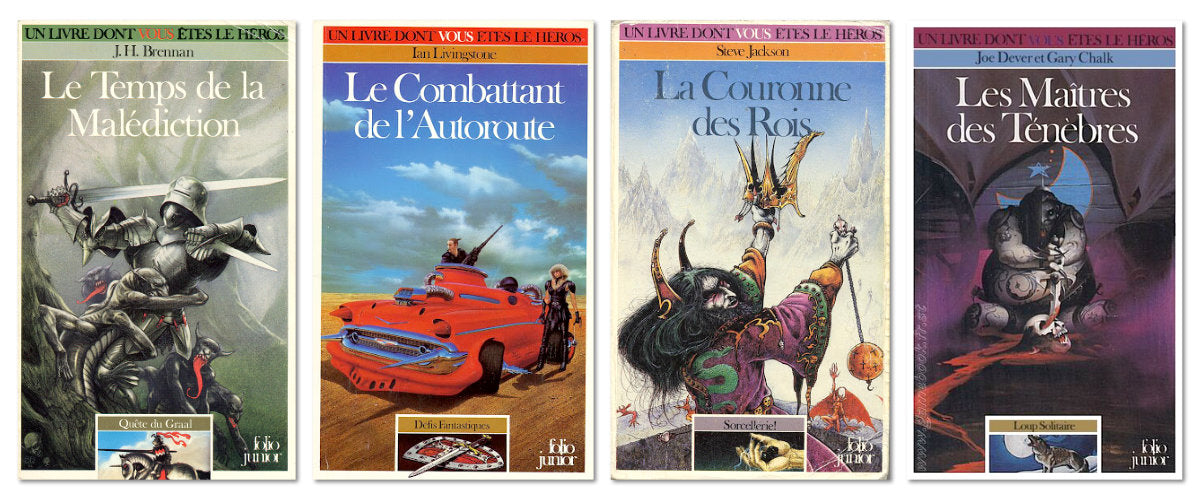 The French edition covers of various gamebook series had some stunning art!
The French edition covers of various gamebook series had some stunning art!
Very quickly, many other books appeared in stores and, eventually, in front of our eyeballs. The Fighting Fantasy series from the founders of Games Workshop was not the only one you could find. In the French speaking world, one publisher got its hands on a multitude of gamebook series and distributed faithfully translated editions under one collection called “Un livre dont vous êtes le héros” which literally translates to “a book of which you are the hero”. Each series within the collection had its own name and an easily identifiable icon on the front cover. Aside from their high fantasy storytelling appeal, the books also featured, for the most part, amazing artwork that provided me with an early introduction to influential artists such as John Howe and Peter Andrew Jones. Among this extravaganza of the poor man’s role-playing games, one series in particular very quickly became a favourite of mine: Lone Wolf by Joe Dever & Gary Chalk.
Lone Wolf
The story takes place in the fictional dark fantasy world of Magnamund, a low magic setting. It finds its inspirations in Arthurian myth, Beowulf, Ivanhoe as well as more modern works of medieval fantasy such as those of J.R.R. Tolkien, John Moorcock and Mervyn Peake. Magnamund started off as Joe Dever’s very own Dungeons & Dragons campaign setting and eventually became the world his successful book series took place in.
The synopsis of the first book is as follows:
“You are the sole survivor of a devastating attack on the monastery where you were learning the skills of the Kai Lords. You swear vengeance on the Darklords for the massacre of the Kai warriors, and with a sudden flash of insight you know what you must do. You must set off on a perilous journey to the capital city to warn the King of the terrible threat that faces his people: For you are now the last of the Kai, you are now Lone Wolf.”
Simple rules
After reading a quick introduction that describes the setting and the events that lead you to set off on this adventure, the book gives you an explanation of the rules that govern the game. By tabletop role-playing standards, these are simple and focus mainly on inventory management, combat and the very unique set of Kai disciplines you have acquired through your training this far. Just like other gamebooks, the rules are there to help determine the outcome of certain situations and greatly contribute to the immersion into the fantasy world and the fact that you are in charge of the hero’s destiny.
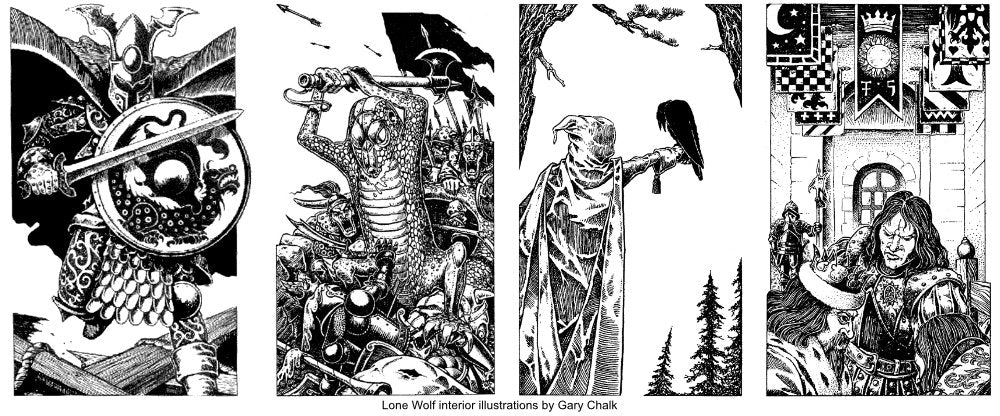
After this short introduction, the adventure starts and there is no time to waste. All one needs to play the book is a pencil and some dice. There is also a random number table at the back of each volume. It can be used instead of rolling dice, making for a very portable experience. As a kid, I remember it being one of the coolest features of these gamebooks: you could carry on playing anywhere, at any time: during lunch break, on the bus, on vacation, etc. It felt like carrying a bottled fantasy world that you could adventure in at will.
Evocative art
From an inspirational point of view, these books had a big impact on my artistic aspirations. Although Frank Frazetta remains one of my all time favourite fantasy artists, I have always had a profound admiration for inked black and white art. J.R.R. Tolkien’s evocative drawings found in The Hobbit sparked that interest, including Bilbo’s Map and the one found in The Lord of the Rings. The Lone Wolf books also include maps that illustrate the region the adventure takes place in. Those, as well as thee black and white illustrations by Gary Chalk, got me to try my hand at many fantasy themed inked drawings. This is really what set me off, unknowingly at the time, on the artistic path that has dominated my career.
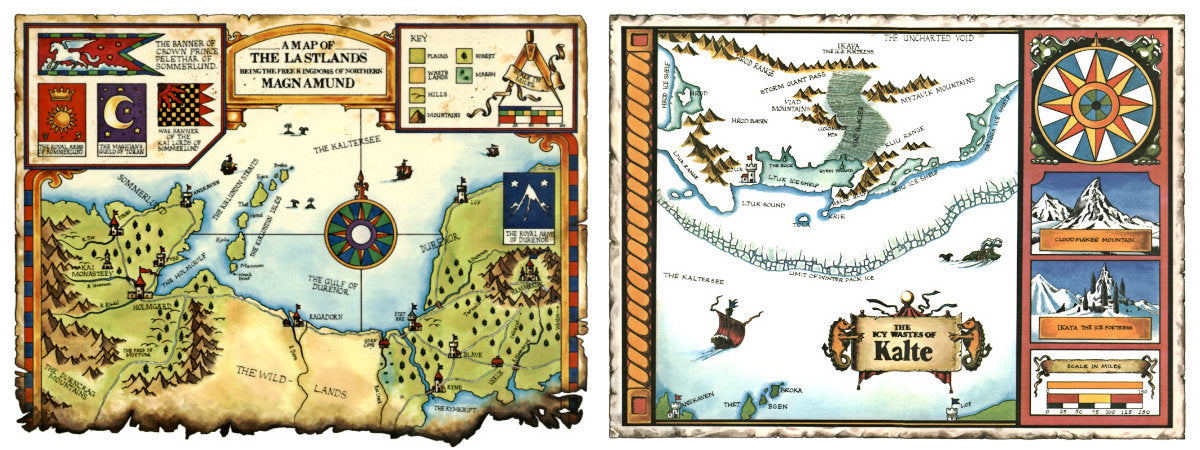 Each book features a map of the setting in question
Each book features a map of the setting in question
Something I discovered with Joe Dever’s books and the art within their pages is that maps can be powerful storytelling devices. That is why I consider the ones I create now to be testaments of events past as well as sandboxes for future adventures. Their evocative power is, for me, their most important quality!
Anything but repetitive
Since Lone Wolf was a series set to tell a story longer than just the part contained in one book, it offered a unique sense of progression. The titular character learned a new Kai discipline of your choosing in every new adventure, leading up to eventually becoming a Kai Master by the end of the first run of five books. Nowadays, even though Joe Dever sadly passed away at the young age of 60 in 2016, the legacy of Lone Wolf remains, with 31 gamebooks that are still being published in some countries. Many other derivative works have been produced, all with the author’s contribution and/or seal of approval, including a board game, novelizations, video games and two tabletop role-playing games including the excellent Lone Wolf Adventure Game by Cubicle 7.

Unfortunately, in North America, you will only be able to find the original gamebook series in places like Ebay for prices that defy reason, as is the case for so many tabletop games that have gone out of print. The good news, though, is that a number of years ago, fans of Joe Dever’s work have made the majority of the Lone Wolf books available online, for free. They have done so with the permission and blessing of the author and all the artists involved over the years. The books can be downloaded in a variety of formats, including some excellent ebooks that are just perfect to use on a tablet. You can find all this goodness over at the Project Aon website.
Sit back and read
Going right back to something I talked about last year, the holiday season is a great opportunity for many to take the time to disconnect and relax. A fair point to take into consideration when reading this post from 2019 is that 2020 calls for a different type of holiday. So, if you feel the need for an unusual sort of escapism, give these gamebooks a try. Get comfortable in your favourite reading spot with a cup of tea, coffee, eggnog, hot cider or whatever you enjoy and set off on a fantasy adventure. Who knows, you might enjoy it or it will make you want to revisit other books you have on your shelf or remind you of a good movie you could enjoy tonight!
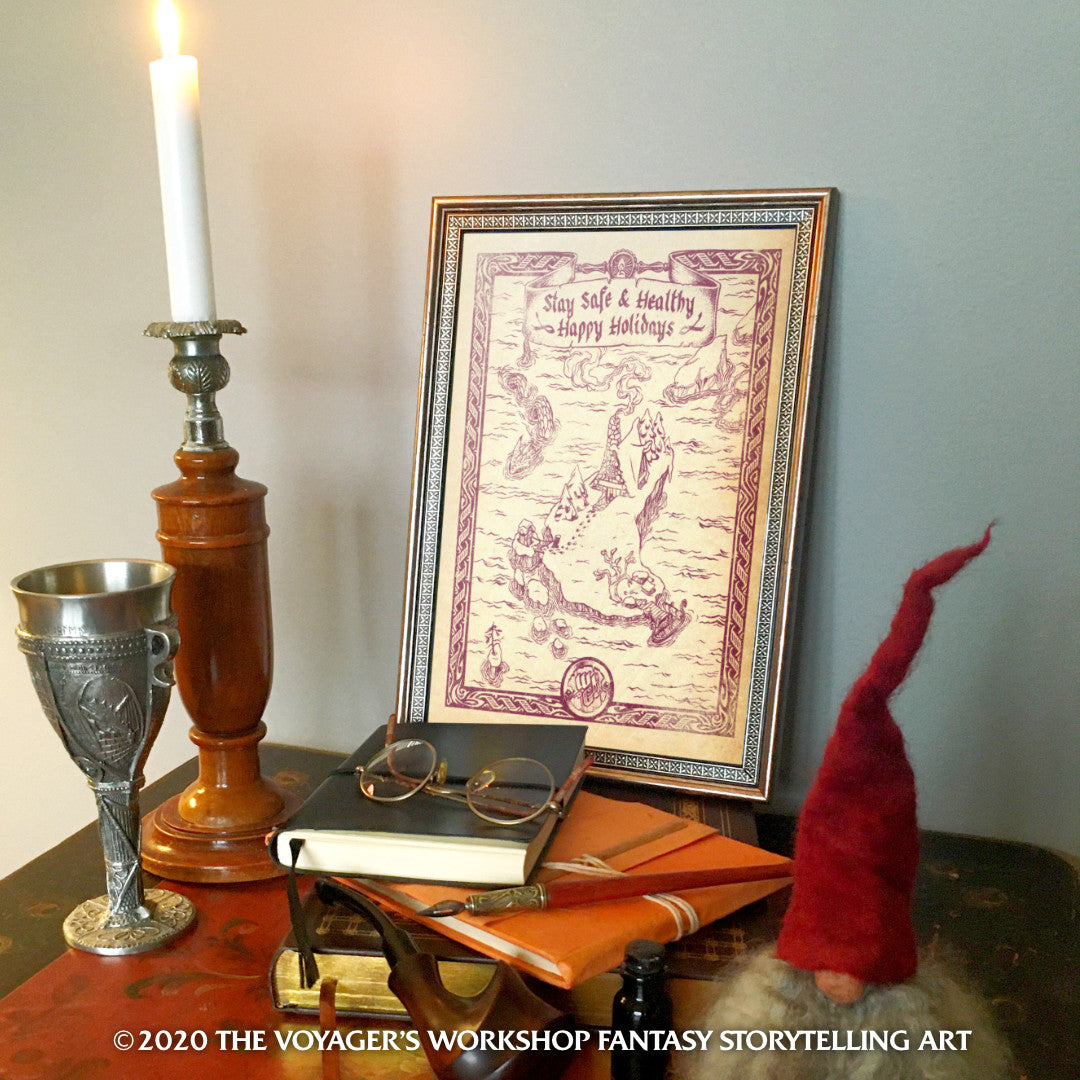
Whichever you decide to do, I hope you do take care, stay safe and healthy, catch up with friends and family, either within the constraints of your bubble and local restrictions, or thanks to the use of all the amazing technology that’s at our fingertips. I wish you all the best for the holidays and the New Year!
Cheers,
Wouter
_________________
Wouter F. Goedkoop is a multi-faceted designer, artist and storyteller who, after living across Europe decided to find his home in Nova Scotia where he lives with his wife and kids. He helps people and companies connect with their audience in meaningful ways by telling relevant and impactful stories. For commissions and freelance inquiries, please use the form on the contact page.
